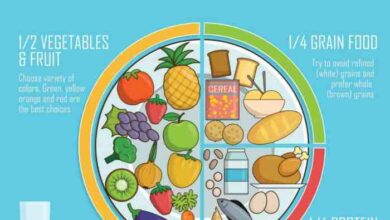
20 Mom Tips and Tricks to Make Being a Mom Easier
20 mom tips and tricks to make being a mom easier – Being a mom is a beautiful journey, but let’s be honest, it can also be a whirlwind of emotions, responsibilities, and endless to-do lists. The good news is, there are strategies and tricks to help you navigate the ups and downs of motherhood with more ease and joy.
In this guide, we’ll delve into 20 mom tips and tricks to make being a mom easier, covering everything from time management and organization to meal planning, parenting, and self-care. Get ready to discover a world of practical solutions that will help you create a more balanced and fulfilling life as a mom.
From creating a weekly meal plan that caters to busy family schedules to discovering apps and gadgets that simplify everyday tasks, we’ll explore a range of tips that can make a real difference in your daily life. Whether you’re a seasoned mom or just starting out, there’s something here for everyone.
So, grab a cup of coffee, settle in, and get ready to discover a treasure trove of tips that will empower you to embrace the joys of motherhood with more confidence and ease.
Time Management and Organization
Being a mom is a 24/7 job, and it can be challenging to find time for everything, from taking care of your kids to managing your household and pursuing your own interests. Effective time management and organization are crucial for maintaining a healthy work-life balance and reducing stress.
Time-Blocking Techniques
Time-blocking involves scheduling specific time slots in your day for different tasks, including work, childcare, errands, and self-care. This helps you prioritize your activities and ensure that you allocate sufficient time for everything that matters. Here are some tips for implementing time-blocking:
- Identify your priorities:Begin by listing all the tasks you need to accomplish each day, week, or month. Then, categorize them based on their importance and urgency. This will help you determine which tasks deserve the most attention.
- Estimate time for each task:Once you have a list of tasks, estimate how long each one will take. Be realistic in your estimations, considering potential delays or unexpected interruptions.
- Schedule your day:Use a calendar or planner to block out specific time slots for each task. Remember to include time for breaks, meals, and unexpected events.
- Be flexible:Life is unpredictable, so be prepared to adjust your schedule as needed. If a task takes longer than expected, you can reschedule other tasks or delegate them to someone else.
Prioritization Strategies
Prioritization involves ranking your tasks based on their importance and urgency, allowing you to focus on the most critical activities first. Here are some prioritization strategies to consider:
- The Eisenhower Matrix:This matrix categorizes tasks into four quadrants: Urgent and Important, Important but Not Urgent, Urgent but Not Important, and Not Urgent and Not Important. Focus on tasks in the Urgent and Important quadrant first, followed by Important but Not Urgent, and so on.
Delegate or eliminate tasks in the Not Urgent and Not Important quadrant.
- The ABC Method:This method involves assigning letters to tasks based on their importance. A tasks are the most important and must be completed first. B tasks are less important and can be completed later. C tasks are the least important and can be delegated or eliminated.
- The Pareto Principle:Also known as the 80/20 rule, this principle suggests that 80% of your results come from 20% of your efforts. Identify the 20% of your tasks that contribute the most to your goals and prioritize them.
Organizing Household Chores and Errands
Effective organization of household chores and errands can save you time and reduce stress. Here’s a step-by-step guide:
- Create a master list:Make a comprehensive list of all the household chores and errands that need to be done, including weekly, monthly, and seasonal tasks.
- Schedule tasks:Assign specific days or times for each task. For example, you could dedicate Mondays for laundry, Tuesdays for grocery shopping, and Wednesdays for cleaning the kitchen.
- Break down large tasks:Divide large tasks into smaller, more manageable steps. For example, instead of cleaning the entire house in one day, you could clean one room per day.
- Use technology:There are many apps and tools available to help you manage household chores and errands. For example, you can use a shared family calendar to track appointments and events, or a grocery list app to keep track of your shopping needs.
- Delegate tasks:If possible, delegate tasks to other family members or hire help. This can free up your time and reduce your workload.
The Importance of Self-Care
Self-care is essential for maintaining a healthy work-life balance and preventing burnout. When you prioritize self-care, you are taking care of your physical, mental, and emotional well-being. This allows you to be a better mom, partner, and individual.
Here are some examples of self-care activities:
- Exercise:Regular physical activity can improve your mood, energy levels, and sleep quality.
- Meditation or mindfulness:These practices can help you manage stress, reduce anxiety, and improve focus.
- Spend time with loved ones:Connecting with friends and family can provide emotional support and reduce feelings of isolation.
- Engage in hobbies:Pursuing your interests can bring joy and fulfillment to your life.
- Get enough sleep:Adequate sleep is essential for physical and mental health. Aim for 7-8 hours of sleep per night.
Meal Planning and Preparation

Meal planning and preparation are essential for busy moms who want to provide healthy and delicious meals for their families without spending hours in the kitchen. A well-structured meal plan can save time, reduce stress, and ensure that your family gets the nutrients they need.
Designing a Weekly Meal Plan
A weekly meal plan helps to organize your grocery shopping, reduce food waste, and prevent last-minute mealtime stress. Here are some tips for creating a successful weekly meal plan:
- Incorporate a variety of healthy foods:Include fruits, vegetables, lean proteins, whole grains, and healthy fats in your meal plan.
- Consider your family’s preferences:Include dishes that everyone enjoys, but also try introducing new recipes or ingredients to expand your family’s culinary horizons.
- Plan for leftovers:Choose recipes that can be easily doubled or tripled to create leftovers for lunches or future meals. This saves time and reduces cooking frequency.
- Be realistic:Don’t try to plan too many elaborate meals in one week. Start with a few simple recipes and gradually increase the complexity as you become more comfortable.
Meal Prepping Tips
Meal prepping involves preparing ingredients or entire meals in advance to save time during the week. Here are some tips for effective meal prepping:
- Chop vegetables and fruits:Wash, chop, and store vegetables and fruits in airtight containers in the refrigerator. This allows for quick and easy meal assembly during the week.
- Cook grains in bulk:Cook quinoa, rice, or pasta in large batches and store them in the refrigerator or freezer. This provides a convenient base for various meals.
- Prepare protein sources:Cook chicken breasts, ground turkey, or beans in advance and store them in the refrigerator or freezer for easy use in salads, wraps, or stir-fries.
- Make sauces and dressings:Prepare homemade sauces or dressings in advance and store them in airtight containers. This eliminates the need for last-minute cooking and adds flavor to your meals.
Quick and Easy Dinner Ideas, 20 mom tips and tricks to make being a mom easier
Busy moms need quick and easy dinner solutions. Here are some ideas for minimal-cooking dinners:
- Sheet pan meals:Toss vegetables, protein, and seasonings on a sheet pan and bake in the oven for a simple and nutritious meal.
- One-pot meals:Prepare a complete meal in one pot, such as soup, stew, or chili, for easy cleanup and minimal effort.
- Salads:Combine pre-chopped vegetables, protein, and a dressing for a refreshing and healthy dinner.
- Quesadillas:Fill tortillas with cheese, beans, vegetables, or meat for a quick and satisfying meal.
Parenting and Childcare
Parenting and childcare are essential aspects of being a mom. It requires a lot of patience, understanding, and a willingness to learn and adapt. This section will focus on effective discipline techniques, creating a positive family environment, and choosing age-appropriate activities and educational resources for children.
Discipline Techniques for Different Age Groups
Disciplining children is an important part of parenting. However, the methods you use will vary depending on the child’s age and development. Here are some effective discipline techniques for different age groups:* Toddlers (1-3 years old):
Distraction
When toddlers misbehave, redirect their attention to something else.
Time-outs
For more serious misbehavior, a short time-out in a designated area can be effective.
From meal prepping to creating a calming bedtime routine, those 20 mom tips and tricks can really make a difference! But sometimes, you just need a little extra boost, like a fun surprise for the kids. This easter egg this would be a perfect surprise would be a great way to add a little excitement to their day, especially if they’re helping with those chores you mentioned in your mom tips list! It’s all about finding those little moments of joy that make being a mom a little bit easier, right?
Positive reinforcement
Reward good behavior with praise, hugs, or small treats.
Preschoolers (3-5 years old)
Natural consequences
Allow children to experience the natural consequences of their actions. For example, if a child doesn’t want to put away their toys, they might not be able to play with them later.
Logical consequences
Connect the consequence to the misbehavior. For example, if a child hits another child, they might lose playtime privileges.
Rules and boundaries
Establish clear rules and boundaries and consistently enforce them.
School-aged children (6-12 years old)
Reasoning and explanation
Explain the reasons behind the rules and consequences.
Problem-solving
From meal prepping to organizing playdates, 20 mom tips and tricks can truly simplify your life. And when you need a fun activity to keep the little ones entertained, try making a bouncy ball you can make at home.
It’s a great way to engage their creativity and keep them active, freeing up a little more time for you to tackle your list of mom tips and tricks.
Encourage children to think about solutions to their own problems.
Consequences and rewards
Implement a system of consequences for breaking rules and rewards for good behavior.
Teenagers (13-18 years old)
Open communication
Maintain open and honest communication with teenagers.
Natural consequences
Allow teenagers to experience the natural consequences of their choices.
Being a mom is a beautiful and challenging journey. From finding time for yourself to managing schedules and keeping the house in order, it’s a constant balancing act. A little planning can go a long way, like setting up a 14 days of gifts countdown to Valentine’s Day for your partner, which can be a fun way to show your love and take some pressure off yourself.
This allows you to prioritize self-care, which is crucial for a happy and healthy mom!
Negotiation and compromise
Encourage teenagers to participate in decision-making and problem-solving.
Creating a Positive and Supportive Family Environment
A positive and supportive family environment is crucial for children’s emotional and social development. Here are some strategies for creating a positive family environment:* Show love and affection:Express your love and affection for your children through words, hugs, and quality time.
Listen to your children
Actively listen to your children’s thoughts and feelings.
Respect your children
Treat your children with respect, even when you disagree with them.
Spend quality time together
Engage in activities that you enjoy together as a family.
Encourage open communication
Create an environment where your children feel comfortable sharing their thoughts and feelings.
Practice gratitude
Express gratitude for the positive aspects of your family life.
Age-Appropriate Activities and Educational Resources for Children
Engaging in age-appropriate activities and providing educational resources can stimulate children’s development. Here are some suggestions:* Toddlers (1-3 years old):
Sensory play
Activities that engage the senses, such as playing with sand, water, or playdough.
Books
Read to your toddler regularly, pointing out pictures and talking about the story.
Simple puzzles and toys
Toys that encourage motor skills development, such as stacking blocks or shape sorters.
Preschoolers (3-5 years old)
Creative activities
Drawing, painting, singing, and dancing.
Pretend play
Encourage imaginative play with dolls, action figures, or dress-up clothes.
Early literacy activities
Sing songs, read books, and play games that promote language development.
School-aged children (6-12 years old)
Sports and extracurricular activities
Encourage participation in sports, music, or other activities that interest your child.
Educational games and apps
Use educational games and apps to make learning fun and engaging.
Reading and writing
Encourage reading for pleasure and provide opportunities for writing.
Teenagers (13-18 years old)
Social activities
Encourage teenagers to participate in social activities with friends and peers.
Career exploration
Help teenagers explore different career options and make plans for their future.
Independent living skills
Teach teenagers independent living skills, such as cooking, cleaning, and managing finances.
Household Management and Cleaning

Keeping a clean and organized home can feel like an insurmountable task when you’re juggling the demands of motherhood. But with a little planning and a few smart strategies, you can make household management a breeze.
Creating a Cleaning Schedule
A cleaning schedule is a must-have for busy moms. It helps you stay on top of tasks and prevents your home from becoming overwhelmed with clutter. The key is to create a schedule that fits your lifestyle and your family’s needs.
Here are some tips for creating a cleaning schedule that works for you:
- Break down tasks:Instead of tackling everything at once, divide cleaning tasks into smaller, more manageable chunks. For example, you can clean the kitchen on Mondays, bathrooms on Tuesdays, and so on.
- Prioritize tasks:Focus on the most important tasks first, such as laundry, dishes, and wiping down surfaces. You can always save less urgent tasks for later.
- Be realistic:Don’t try to do too much at once. Start with a basic schedule and gradually add more tasks as you become more comfortable.
- Use a calendar or app:A calendar or app can help you keep track of your cleaning schedule and ensure that you don’t miss any tasks.
Decluttering and Simplifying Your Home
Decluttering is an essential part of household management. It not only makes your home look and feel more spacious but also reduces stress and saves you time. Here are some tips for decluttering and simplifying your home:
- Start small:Choose one area of your home, such as a closet or a drawer, to declutter first. Once you’ve mastered one area, you can move on to another.
- Use the “one in, one out” rule:For every new item you bring into your home, get rid of an old one. This helps to prevent clutter from accumulating.
- Don’t be afraid to let go:If you haven’t used something in a year, it’s probably time to get rid of it. You can donate items to charity, sell them online, or simply throw them away.
- Make use of vertical space:Use shelves, drawers, and other vertical storage solutions to maximize space and keep things organized.
Essential Cleaning Products and Their Uses
Having the right cleaning products on hand can make a big difference in your cleaning routine. Here’s a list of essential cleaning products and their effective uses:
- All-purpose cleaner:This is a versatile product that can be used to clean most surfaces in your home, including countertops, floors, and appliances.
- Disinfectant wipes:These wipes are great for quickly cleaning and disinfecting surfaces, especially in areas where germs are likely to spread, such as the kitchen and bathroom.
- Glass cleaner:This product is specifically designed to clean glass surfaces, such as windows, mirrors, and picture frames.
- Carpet cleaner:This product can be used to remove stains and dirt from carpets and rugs.
- Laundry detergent:This is essential for keeping your clothes clean and fresh.
- Dish soap:This product is used to wash dishes and other kitchenware.
Self-Care and Well-being
Being a mom is a demanding job, and it’s easy to get caught up in the day-to-day tasks and lose sight of your own needs. Prioritizing self-care is essential for moms to maintain their physical and mental well-being, allowing them to be the best versions of themselves for their families.
Managing Stress and Anxiety
Stress and anxiety are common experiences for moms, and it’s crucial to develop effective coping mechanisms. Here are some tips for managing stress and anxiety:
- Practice Mindfulness:Mindfulness involves focusing on the present moment without judgment. Simple mindfulness practices, like deep breathing exercises or meditation, can help calm your mind and reduce stress.
- Engage in Physical Activity:Regular exercise releases endorphins, which have mood-boosting effects. Even a short walk or a quick workout can make a difference.
- Seek Social Support:Connecting with friends, family, or a support group can provide a sense of belonging and offer emotional support.
- Prioritize Sleep:Adequate sleep is crucial for both physical and mental well-being. Aim for 7-8 hours of sleep each night.
- Limit Screen Time:Excessive screen time can contribute to stress and anxiety. Set boundaries for screen use and prioritize face-to-face interactions.
Finding Time for Relaxation and Personal Hobbies
It can be challenging to find time for yourself when you’re constantly juggling motherhood responsibilities. However, carving out even a few minutes each day for relaxation and personal hobbies can significantly impact your well-being.
- Schedule “Me Time”:Treat “me time” as an essential appointment. Block out time in your schedule for activities you enjoy, even if it’s just for 15 minutes.
- Delegate Tasks:Don’t be afraid to ask for help from your partner, family, or friends. Delegate tasks to free up time for yourself.
- Embrace Simple Pleasures:Relaxation doesn’t have to be elaborate. Enjoy a warm bath, read a book, listen to music, or spend time in nature.
- Reconnect with Hobbies:Reignite your passion for a hobby you’ve neglected. Whether it’s painting, gardening, or playing an instrument, dedicating time to your interests can be incredibly rejuvenating.
Finances and Budgeting: 20 Mom Tips And Tricks To Make Being A Mom Easier
Managing your family’s finances effectively can be a daunting task, especially when juggling the demands of motherhood. However, with a bit of planning and organization, you can achieve financial stability and peace of mind. This section will explore practical strategies for managing household finances, saving money on everyday expenses, and creating a realistic budget for your family.
Strategies for Managing Household Finances
Effective financial management involves understanding your income, expenses, and creating a plan to ensure your financial well-being. Here are some strategies to consider:
- Track your spending:Start by meticulously tracking your income and expenses for a month. This will give you a clear picture of where your money is going. There are various tools available, from simple spreadsheets to budgeting apps, to help you track your spending.
- Create a budget:Once you understand your spending patterns, create a realistic budget that allocates your income to different categories, such as housing, food, transportation, and savings. Make sure to prioritize essential expenses and allocate funds for savings and debt repayment.
- Set financial goals:Having clear financial goals, such as saving for a down payment on a house, your child’s education, or retirement, will provide motivation and direction for your financial decisions.
- Review your budget regularly:Life is constantly changing, so it’s crucial to review your budget regularly to ensure it still aligns with your needs and goals. Make adjustments as necessary to accommodate any changes in income, expenses, or priorities.
Saving Money on Everyday Expenses
There are numerous ways to save money on everyday expenses without compromising your family’s quality of life. Here are some practical tips:
- Shop around for better deals:Compare prices for groceries, utilities, and other services to find the best deals. Take advantage of coupons, discounts, and loyalty programs.
- Cook at home more often:Eating out frequently can be expensive. Plan your meals in advance and cook at home more often. This will save you money and allow you to control the ingredients and portion sizes.
- Reduce energy consumption:Turn off lights when you leave a room, unplug appliances when not in use, and adjust your thermostat to save on energy costs.
- Cut back on unnecessary expenses:Identify areas where you can cut back on unnecessary expenses, such as entertainment, subscriptions, or memberships.
- Use public transportation or carpool:If possible, use public transportation or carpool to reduce your fuel costs and parking expenses.
Creating a Realistic Family Budget
Creating a realistic budget involves understanding your family’s income and expenses and allocating funds to different categories based on your priorities. Here’s a guide to help you create a family budget:
- Gather your financial information:Start by gathering all your income and expense information, including pay stubs, bank statements, and credit card bills.
- Categorize your expenses:Classify your expenses into different categories, such as housing, food, transportation, healthcare, childcare, entertainment, and savings.
- Allocate your income:Based on your spending patterns and priorities, allocate your income to each expense category. Make sure to allocate funds for savings and debt repayment.
- Track your progress:Regularly track your spending and compare it to your budget. Make adjustments as needed to ensure you’re staying on track.
- Use budgeting tools:Utilize budgeting tools, such as spreadsheets, apps, or online calculators, to simplify the process of creating and managing your budget.
Financial Resources for Families
Several resources can provide valuable information and support for managing family finances.
- Local community organizations:Many local community organizations offer financial literacy programs, budgeting workshops, and resources for families in need.
- Government agencies:Government agencies, such as the Internal Revenue Service (IRS) and the Department of Housing and Urban Development (HUD), provide information on taxes, housing assistance, and other financial programs.
- Financial institutions:Banks, credit unions, and other financial institutions offer financial counseling and resources to help you manage your finances.
- Online resources:Numerous websites and online resources provide information on budgeting, saving money, and managing debt.






